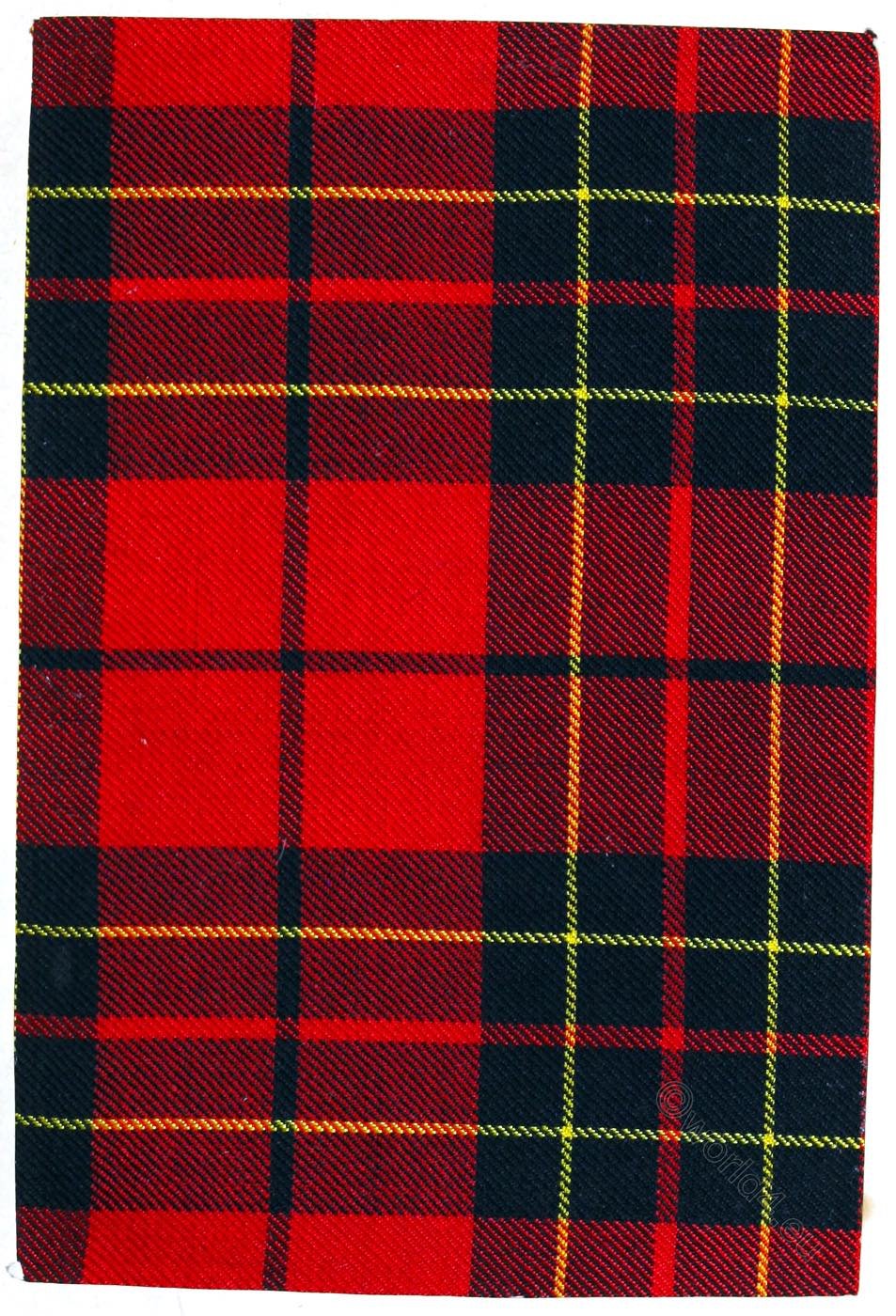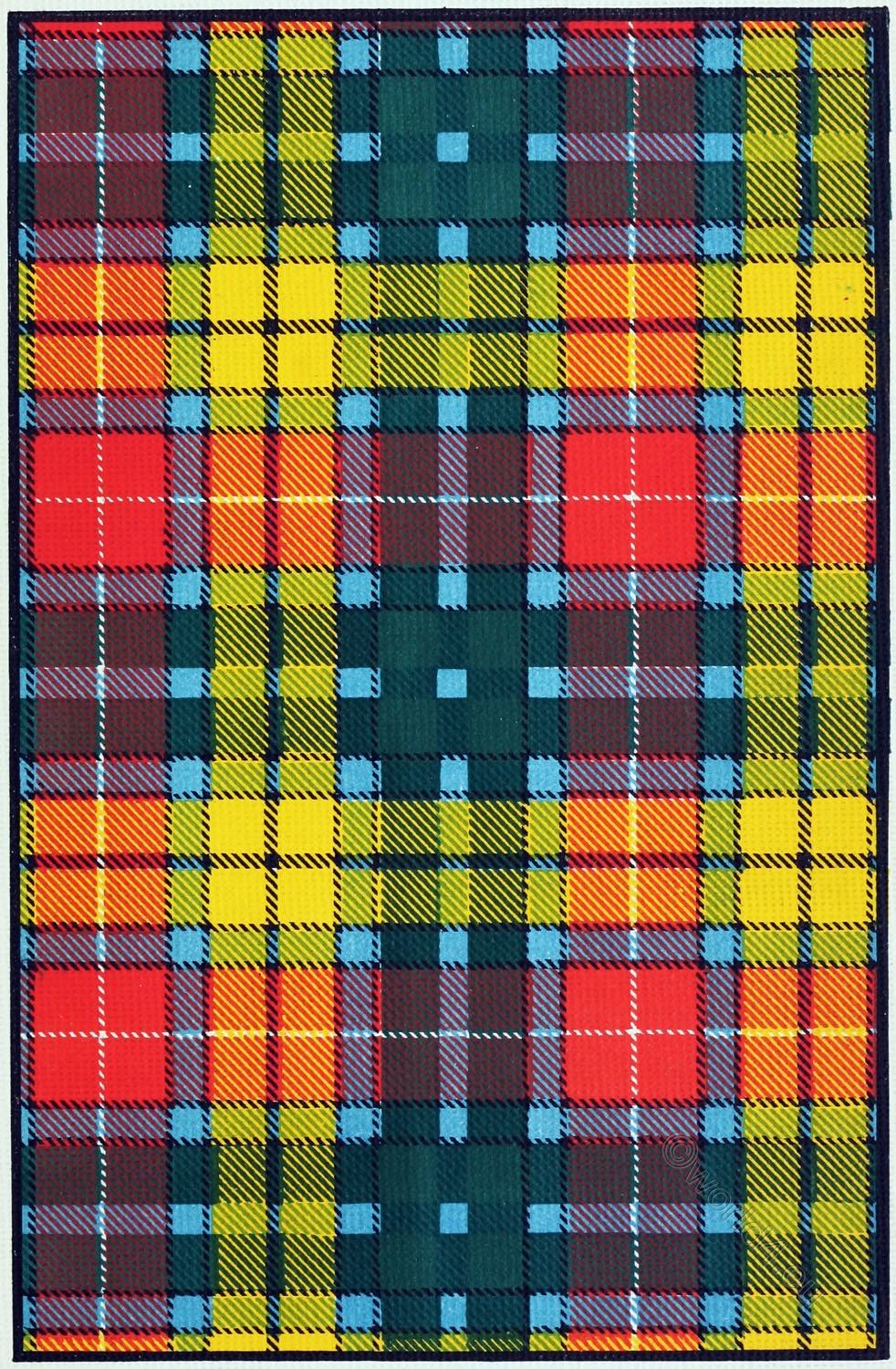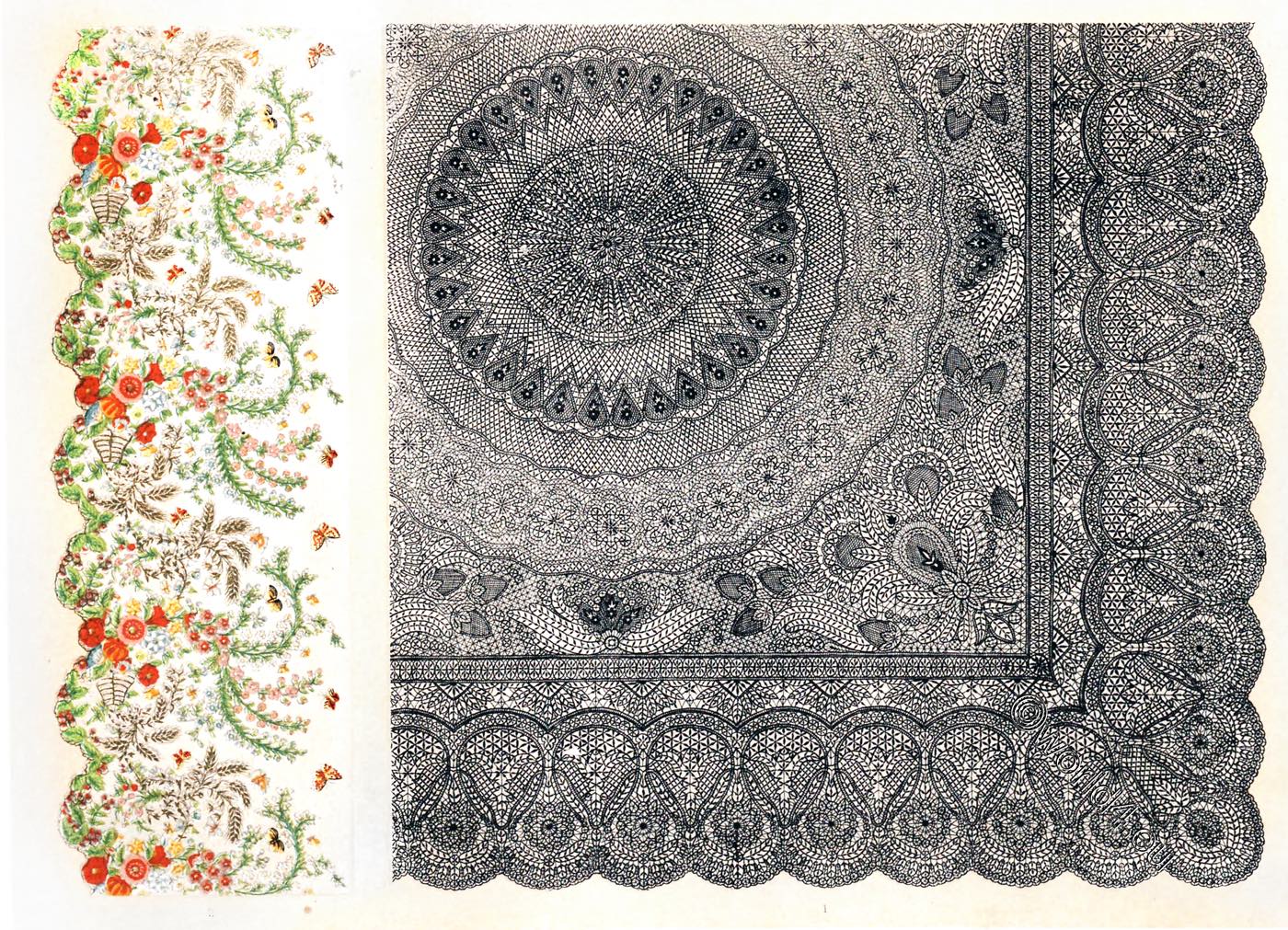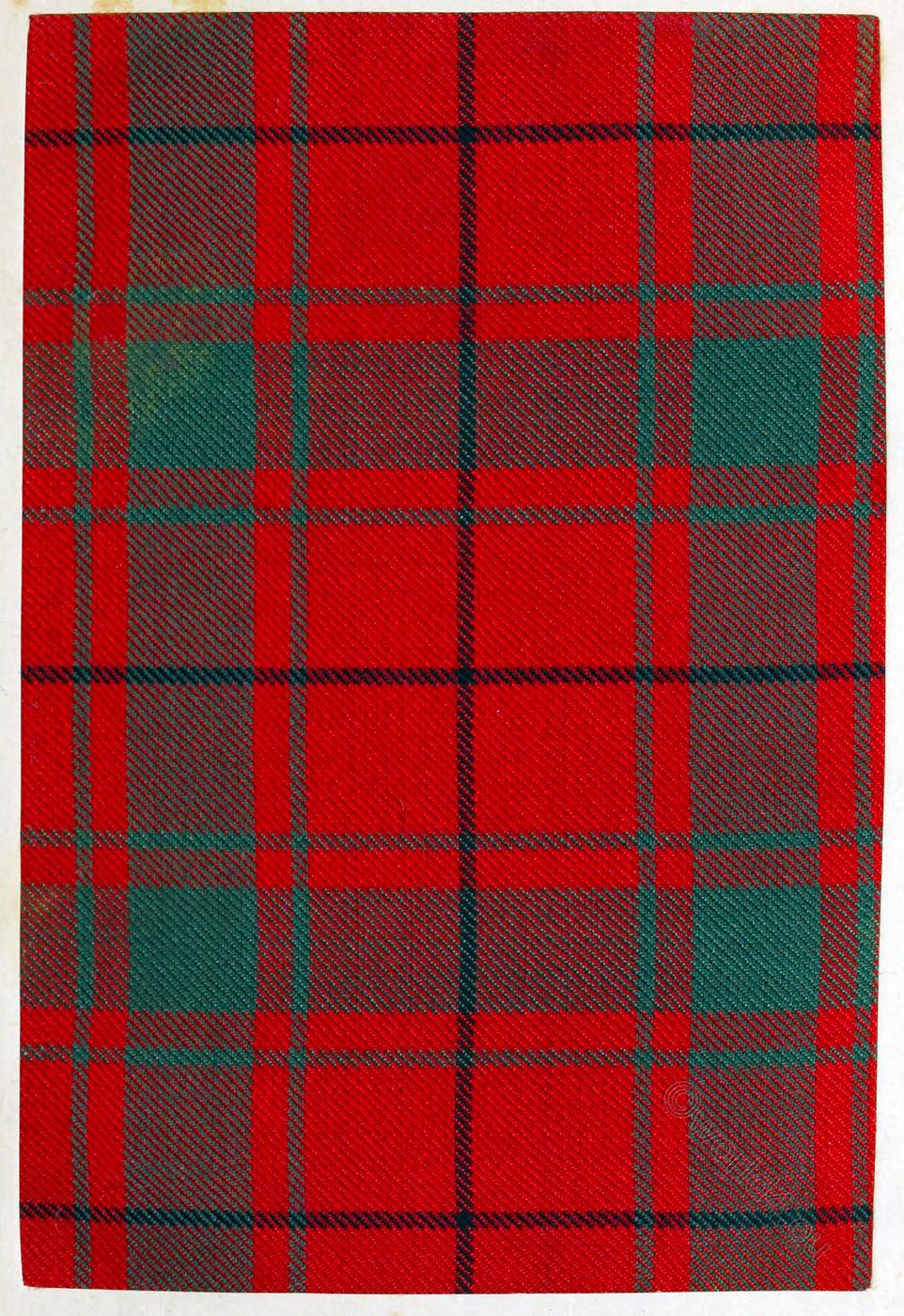
BRODIE.
IT is not known when this design was originally adopted; but, though the pattern cannot be traced in early paintings, it nevertheless possesses internal evidence of some antiquity, since many of the oldest tartans are variations of the red and black check, popularly styled the Rob Roy 1), with the addition of narrower lines of various hues, as in the present instance.
The beginning of the century witnessed its use, as it is included in several collections of the hard tartans produced at the time; and since then it has always figured in the pattern-books and the lists both of connoisseurs and of manufacturers. Certainly, it has been regarded as the true Brodie by makers as far back as business records or traditions extend.
Of late a green tartan has been sold as undress or hunting Brodie, but it seems unsupported by any remote authority. The pattern illustrated as the Huntly district tartan (Plate X.) was also known as Brodie seventy years ago; it was so called because many Brodies who belonged to the districts occupied by the Gordons, Forbeses, and others wore it in early times as the district tartan, and more recently in some instances adopted it as their family pattern.
1) Why the simple red and black check receives the title of Rob Roy is something of a mystery. In Authenticated Tartans of the Clans and Families of Scotland (Smith: Mauchline, 1850) it is asserted, and the statement is repeated in Tile Tartans of the Clans of Scotland (W. & A. K. Johnston: Edinburgh, 1886) without attempt at verification, that three genuine portraits of Rob Roy represent him as wearing it; but these and other so-called Rob Roy portraits-be their value what it may-afford no sanction whatever for the design. The Editor is not aware on what authority the portraits are classed as Rob Roy. He has seen seven paintings, including the three above referred to, in which the figure is identical, all known as Rob Roy, and in each a separate pattern appears, none of them showing the simple red and black check. The tartan is accepted by sound authorities as the old Macgregor clan pattern. There are fine examples of it in a collection of tartans made by the Highland Society of London in 1816-17, labelled and sealed “The MacGregor Tartan for undress ordinary clothing. The Seal of Arms of Sir John MacGregor Murray of MacGregor, Baronet. [Signed] John M. Murray.”

BRODIE OF BRODIE.
THIS name (says Shaw in his “History of Moray”) “is manifestly local, taken from the lands of Brodie. I incline to think that they were originally of the ancient Moraviensea, and were one of those loyal tribes to whom Malcolm IV. gave lands about the year 1160, when he transplanted the Moray rebels.”
The old writings of the family were mostly carried away or destroyed when Lord Lewis Gordon, afterwards (3rd) Marquis of Huntly, burnt Brodie House in 1645. From Malcolm, Thane of Brodie, living temp. King Alexander 111., descended Alexander Brodie of Brodie, styled Lord Brodie as a senator of the College of Justice, born 25th July 1617, whose son and successor, James Brodie of Brodie, born 15th September 1637, married in 1659 Lady Mary Ke, daughter of William, third Earl of Lothian. He left nine daughters, but no son, and was succeeded by his cousin George Brodie, son of Joseph Brodie of Aslisk, and grandson of David Brodie of Brodie, brother of Lord Brodie.
He married, in 1692, Emily, fifth daughter of his predecessor, and died in 1716. He left three suns and two daughters. James Brodie the eldest son and heir, died young, 1720, and was succeeded by his brother Alexander, born 17th August 1097. He was appointed Lord Lyon of Scotland 1727, and died 1754. By his wife Mary Sleigh, he had a son Alexander, his heir, and one daughter, Emilia. Alexander Brodie of Brodie, born 29th May 1741, died in 1750, and was succeeded by his second cousin James Brodie, son of James Brodie of Spynie. This gentleman, Lord-Lieutenant of the County of Nairn, was born 31st August 1744, and married Lady Margare Duff, youngest daughter of William, first Earl of Fife. This lady was burnt to death at Brodie House, 24th April 1786, and he died 17th January 1824, leaving two sons and three daughters.
Their son James was drowned in his father’s lifetime, leaving by Ann, his wife, daughter of Colonel Story of Ascot, two suns and five daughters. Their eldest son, William Brodie, Esq., of Brodie, in Morayshire, Lieutenant of Nairnshire, was born 2nd July 1799, succeeded his grandfather, January 1824, married, November 27, 1838, Elizabeth, third daughter of the late Colonel Hugh Baillie, M.P., of Red Castle, and had issue: Hugh Fife Ashley, R.A., born 8th September 1840, and died 1889, leaving Ian Ashley, now of Brodie.
The other branches of the clan are Brodie of Lethen, and Brodie of Eastbourne, Sussex, and a Brodie was made a Baronet in 1834.
Source:
- Old and rare Scottish tartans, with historical introduction and descriptive notices by Donald William Stewart. Edinburgh, G. P. Johnson 1893.
- The Scottish clans and their tartans: with notes. Library Edition. Edinburgh and London: W. & A.K. Johnston, 1826.
Related
Discover more from World4 Costume Culture History
Subscribe to get the latest posts sent to your email.






